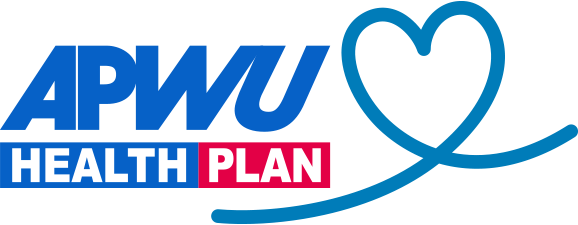Eating a healthy diet is essential for your physical health and emotional wellbeing. When you’re living on a tight budget, finding nutritious, affordable food can be a challenge. While fast food may be tasty and filling, it also tends to be loaded with calories, saturated fat, and added sugars. And despite what some may think, fast food is rarely cheaper than eating healthy, home-cooked meals. Fortunately, there are easy steps you can take to can enjoy healthy food without breaking the bank.
How to save money on healthy food
Going out to eat can be expensive. Preparing meals at home gives you more control over what you eat and can help you maintain a healthy, balanced diet.
1. Plan ahead. It’s easier to make healthy choices and save money on food when you have a plan. Sticking to a shopping list can also help you avoid impulse buys that will break your budget. Visit Spend Smart Eat Smart to plan a food budget that’s right for you. In addition to inexpensive recipes based on the U.S. Department of Agriculture’s Dietary Guidelines, you’ll find videos, blog posts, shopping tools, cooking tips, and more.
2. Choose whole foods. Shop the perimeter of the grocery store first. Grocers tend to place healthy, whole foods—like produce, fresh meats, and dairy—on the edges of the store. Unhealthier, processed foods often line the center aisles.
Cut a whole chicken into parts and freeze portions in ready-to-use packages. A head of lettuce will stay fresh for longer, so chop lettuce yourself, rather than purchasing bagged salad mixes. And shredding or slicing your own cheese is cheaper than buying processed cheese, which may contain additives.
3. Stock up on bulk items. Buying staples in bulk can save you money, but only buy what you can use before it expires. Store bulk grains, cereals, rice, and dried beans in airtight containers. Stock up on pantry essentials when they’re on sale: frozen and canned vegetables, pasta, cooking oil, canned fish, flour, nuts and seeds, stock cubes, and herbs and spices.
4. Find cheaper protein options. Protein powers your body and is an important building block of bones, muscles, cartilage, and skin, but it can put a strain on your food budget. Save money by trying more affordable protein options, like eggs, or by replacing meat with plant-based proteins, including soy, tofu, beans, and lentils. Plant-based proteins contain less saturated fat, which can help reduce your risk of heart disease and type 2 diabetes.
- Add rice, vegetables, beans, or whole grains to meat to make nutritious, filling meals
- Combine ground meat with black beans in tacos
- Add whole grains to meatloaf
- Double the amount of veggies in your chicken stir-fry
If you’re a meat lover, consider purchasing cheaper cuts. When slow-cooked, cheaper cuts of meat can be very tasty. A slow cooker uses less energy than a conventional oven and won’t overheat your home in the summer. Use a slow cooker to create healthy soups, stews, chili, and more.
5. Fill half of your plate with fruits and veggies. Fruits and vegetables are an essential part of a healthy diet. According to the Dietary Guidelines for Americans, at least half of your daily intake of fruit should come from whole fruit. Any vegetable or 100% vegetable juice counts as part of the vegetable group.
Seasonal produce is the tastiest, most nutritious food you’ll find at the grocery store—and it usually costs less. If fresh produce isn’t available, most frozen fruits and vegetables are as nutritious as fresh varieties and will last longer. Look for products without added sugars or sodium. Consuming too much added sugar can lead to health problems, such as weight gain and obesity, type 2 diabetes, and heart disease. Also, eating less sodium can reduce your risk for high blood pressure.
6. Cut down on empty calories. Junk food may seem cheap, but it often comes with hidden costs. Over time, unhealthy eating can make you less energetic and productive, and it can put you at a greater risk for certain health conditions. Avoid frozen pizza, cookies, crackers, and processed foods. These foods tend to be high in unhealthy ingredients and low in essential nutrients. Instead of soda, drink water flavored with a squeeze of lemon or lime.
Eating well on a budget doesn’t mean eliminating all desserts. Try to avoid processed desserts, such as cakes, cookies, and muffins, and satisfy your sweet tooth with healthier, more affordable treats.
- Freeze your own 100 percent fruit juice popsicles
- Freeze grapes or berries for a refreshing snack
- Slice up bananas and peaches and throw them into the freezer
- Pour dark chocolate sauce over fruit
More tips on reducing food expenses without sacrificing nutrition
- Eat a healthy snack or meal before you go to the grocery store. You are more likely to impulse buy when you’re hungry.
- Look for recipes that use the same or similar ingredients, so you don’t throw anything away.
- Avoid unhealthy carbohydrates (white bread, cakes, cookies, bakery items, white rice, and some cereals) and focus on healthy carbs (whole grains, beans, fruits, and vegetables). Your body processes healthy carbs slowly, providing long-lasting energy and maintaining stable blood sugar and insulin levels.
- Store and generic brands often cost less than name brands for the same quality product.
- Download a free unit price comparison app on your mobile device so you can check which product offers the best value while you’re shopping.
- Grocery stores with loyalty programs provide store coupons and discounts on featured items.
- Shop at a local farmers’ market. The fresh food local farmers sell is often cheaper than what you’ll find at the grocery store.
- Cook large meals at the beginning of the week so you’ll have leftovers for later when you don’t feel like cooking.
- Instead of picking up a coffee on your way to work, make coffee at home.
Additional source
Help Guide, Eating Well on a Budget







